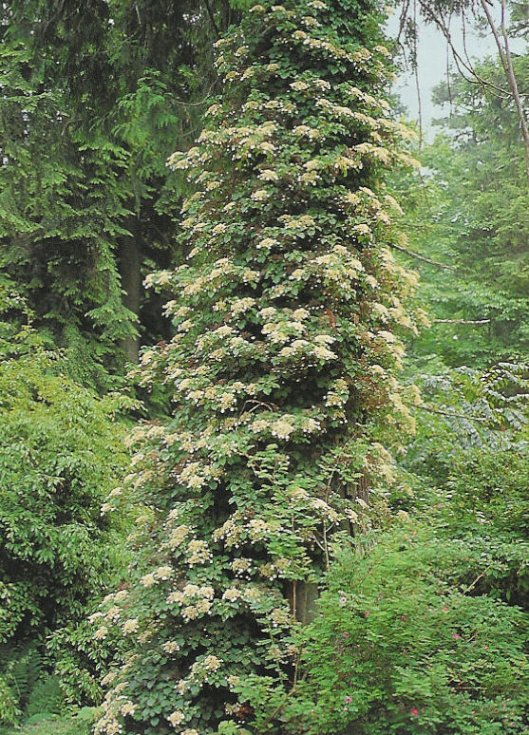| Botanical Name: Hydrangea anomala petiolaris | |
| Common Name: Climbing Hydrangea |

-
Anatomy
-
Culture
-
Design
Plant Type
Vine
Height Range
12-25', 25-40'
Flower Color
White
Flower Season
Spring, Summer
Leaf Color
Dark Green
Bark Color
Tan
Fruit Color
n/a
Fruit Season
n/a
Sun
Full, Half, Shade
Water
Medium, High, Extra in Summer
Growth Rate
Moderate, Slow
Soil Type
Sandy, Clay, Loam
Soil Condition
Average, Rich, Well-drained, Moist
Soil pH
Neutral, Basic
Adverse Factors
n/a
Design Styles
English Cottage, Formal, Japanese, Mediterranean, Ranch, Spanish, Tropical, Woodland
Accenting Features
Showy Flowers
Seasonal Interest
Winter, Spring, Summer, Fall
Location Uses
Background, Foundation, Patio, Walls / Fences
Special Uses
Screen
Attracts Wildlife
n/a
Information by: Stephanie Duer
Photographer: JJ Neilson Arboretum
Photographer: JJ Neilson Arboretum
-
Description
-
Notes
This Hydrangea grows as a slow, deciduous vine, clinging by adhesive, aerial rootlets like english ivy. Its wide, heart shaped, deep green leaves offer a nice contrast to the white lacecap flowers which appear in summer. Grow in sun to part shade, in our climate it grows best on east or north walls and fences. It can eventually grow 40 to 60 feet, but that will take quite a bit of time, and its size can be controlled through selective pruning. Deciduous.
Like other hydrangea, this plant prefers loamy well-drained soils and sun to part shade conditions. Slow to establish, and sometimes initially needs support until it adheres to a wall or fence. Pruning is only necessary to control size.